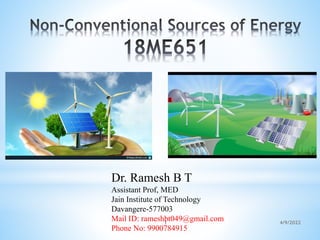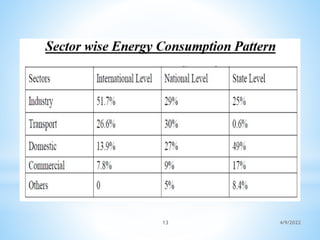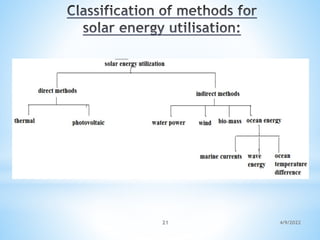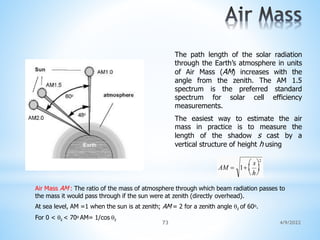The document discusses the concept of energy, its various forms, and classification into conventional and non-conventional sources. It emphasizes the need for alternative energy sources due to the declining reserves of fossil fuels and the environmental impact of traditional energy consumption. Additionally, it outlines the characteristics, advantages, and disadvantages of both conventional and non-conventional energy resources, along with specific energy sources like solar, biomass, tidal, and geothermal energy.





















































































